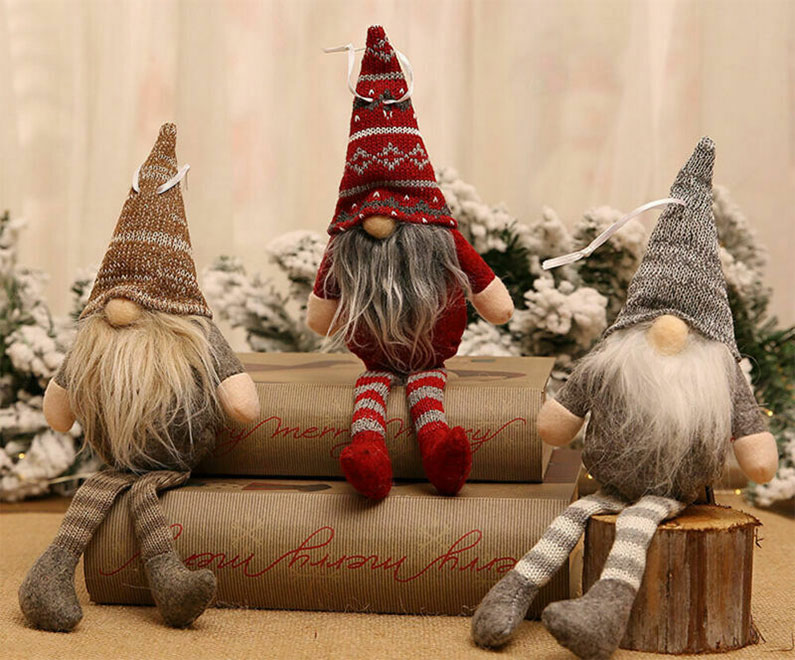
Introduction
When you think of unique Christmas decorations, gnomes and their less-known cousins, gonks, often come to mind. As a staple in British pop culture since the 1960s, gonks have cemented their place not just as quirky toys but as symbols with profound meanings. But what are these fuzzy creatures all about? Let’s delve into the enchanting world of gonks.
Historical Origins of Gonks
Originating in the 1960s, gonks were first designed as stuffed toys made from odds and ends. Crafters created these whimsical characters using spare fabric, yarn, and other materials found around the house. Their rise in British pop culture was swift, soon becoming emblematic toys of the era. To truly appreciate their appeal, one needs to understand the historical context of Christmas gnomes and their popularity.
Physical Characteristics of Gonks
Gonks are best characterized by their simple, unassuming, and endearing appearance. They often have rounded bodies, similar to a stuffed toy, with elongated, gnome-like hats that sometimes obscure their eyes. Many gonks have prominent noses peeking out from beneath their hats, with a fluffy beard cascading below.
Their arms and legs are typically stubby, with feet often hidden under their plump bodies. A delightful aspect of gonks is their adaptability; while there’s a general design, regional variations or personal touches allow for an array of different appearances. Over time, as crafting materials have evolved, you might find gonks made with more intricate patterns, various textiles, and embellishments, but the essence remains rooted in simplicity.
Symbolic Meanings and Representations
The magic of gonks doesn’t end with their appearance. Over time, they’ve been embraced as symbols of good luck, especially during the holiday season. This symbolism isn’t isolated to gonks alone. If you’ve ever wondered about the significance of gnomes as Christmas decorations, or what gnomes represent during the Yuletide, there’s a rich tapestry of beliefs and traditions to uncover, from the story behind Christmas gnomes to the names they’re called in various cultures, like in Norway and Denmark.
Gonks in Popular Culture
Much like gnomes, gonks have found their way into various facets of popular culture. Their resurgence in the 21st century, especially as Christmas decorations, has reignited interest in these charming figures. But are gnomes reserved only for the Christmas season? The popularity of these creatures, especially during the festive period, begs this question. For a sprinkle of festive humor, there are also delightful Christmas gnome jokes and facts that highlight their impact on pop culture.
Comparison to Other Mythical Creatures and Symbols
While gonks might be reminiscent of gnomes, they have their distinct identity. As mentioned, gnomes, especially Christmas gnomes or “tomte,” have a deeper folklore background, often associated with protection. Similarly, other mythical creatures like leprechauns or brownies from different cultures have their roles and characteristics. However, gonks stand out in their simplistic representation and their primary function as decorative, protective symbols for the home.
That said, like many mythical creatures, gonks remind us of the beauty of traditions and stories passed down through generations. They’re a testament to the universality of certain themes: the need for protection, the warmth of home, and the magic of the festive season.
In the realm of symbols, gonks can be compared to talismans or amulets—objects believed to bring good luck or protection. Their plush, benign appearance, however, makes them more accessible and familiar, especially to children, bridging the gap between tradition and modernity.
The Evolution of Gonks
As with all things, gonks have evolved over the years. From their humble origins as handmade toys, they’ve transformed into intricate decorative pieces. For those inspired by their charm, there are resources like a step-by-step guide to creating your own DIY Christmas gnome decor. Additionally, there are a plethora of options for those looking to purchase, from personalized Christmas gnomes to the best Christmas gnomes available.
DIY Crafting with Gonks
A part of the allure of gonks lies in their DIY origins. These were toys and decorations people often made from home materials, giving each creation a unique, personal touch. This DIY spirit is still alive and thriving, and for those interested, creating a gonk can be a delightful holiday project. To get started with your own gonk craft, be sure to check out our comprehensive guide to making DIY Christmas gnome decor.
The Gnome-Gonk Connection
While gnomes and gonks are distinct, they’re often used interchangeably, especially in holiday contexts. Christmas gnomes, sometimes known as “tomte” in some Scandinavian cultures, have rich folklore backgrounds, acting as protectors of homes during the long winter nights. The essence of protection and good luck is a common theme with gonks as well. Discover more about these connections and the fascinating stories behind Christmas gnomes on our website.
Keeping the Tradition Alive
Whether it’s a gonk or a gnome that catches your fancy, it’s essential to recognize the traditions and stories they represent. Their enduring popularity, especially during Christmas, is a testament to their cultural impact. From jokes to facts, learning more about Christmas gnomes can be both entertaining and enlightening.
Conclusion
Gonks, with their rich history and cultural significance, are more than just holiday decorations. They symbolize tradition, good luck, and the spirit of creativity. So, the next time you spot one of these adorable creatures, remember the legacy they carry and the joy they bring.
Additional Resources/References
For further reading and to immerse yourself in the enchanting world of gnomes and gonks, explore our comprehensive list of resources available on Let It Be Gnome.

